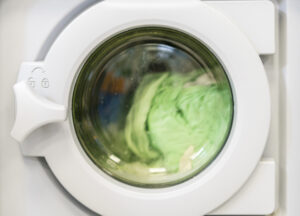In today’s fast-paced world, where time is of the essence, the choice between hot and cold water for doing laundry might seem like a trivial decision. However, the temperature of the water you use can significantly impact the cleanliness and longevity of your clothes. According to a survey conducted by Consumer Reports, approximately 75% of households in the NZ use hot water for laundry, while only 25% opt for cold water.
And to help you understand this better, we’ll explore the benefits and drawbacks of both hot and cold water laundry cycles, and provide some tips for choosing the best option for your needs. Let’s start!
Different Water Temperature and their Benefits
When it comes to doing laundry, the temperature of the water plays a crucial role in achieving the desired results. Each water temperature – hot, warm, and cold – offers its own set of benefits tailored to different types of fabrics and stains.
Hot Water
Hot water, typically defined as temperatures between 40°C and 60°C, is known for its effectiveness in removing tough stains and sanitising clothes. Here are some key benefits of using hot water for laundry:
- Effective Stain Removal: Hot water is excellent for tackling stubborn stains like oil, grease, and food spills. The higher temperature helps break down the molecules of the stains, making them easier to remove during the wash cycle with laundry detergent.
- Sanitisation: Hot water kills germs and bacteria present in dirty clothes, ensuring that your laundry is thoroughly cleaned and hygienic.
- Whitening: Hot water is ideal for whitening white fabrics and removing discolouration caused by dirt and grime. It helps restore the brightness of fabrics, leaving them looking fresh and clean.
Warm Water
Warm water, typically between 30°C and 40°C, offers a middle ground between hot and cold water temperatures. It provides a balance of cleaning power and fabric care, making it suitable for a wide range of fabrics and stains. Here are the benefits of using warm water for laundry:
- Gentle Cleaning: Warm water is less harsh on fabrics compared to hot water, making it suitable for delicate items like lingerie, woollen garments, and synthetic fabrics. It provides effective cleaning without causing damage or shrinkage.
- Enhanced Stain Removal: Warm water helps activate the detergent more effectively than cold water, improving its ability to lift and remove stains from clothes. It’s particularly useful for tackling moderate stains like grass stains, sweat stains, and light dirt.
Cold Water
Cold water, typically below 30°C, is renowned for its gentleness on fabrics and energy efficiency. While it may not provide the same level of stain removal as hot water, cold water washing offers several benefits, including:
- Fabric Preservation: Colder water temperatures are gentle on delicate fabrics like silk, wool, and lace, helping to preserve their colour and texture. It minimises the risk of shrinkage and damage, extending the lifespan of your clothes.
- Save Energy: Cold wash consumes less energy compared to hot water, reducing your household’s energy consumption and utility bills. It’s an eco-friendly option that helps lower your carbon footprint.
- Prevention of Colour Fading: Cold water washes are suitable for washing dark and bright-coloured clothes, as they help prevent colour bleeding and fading. It keeps your wash clothes looking vibrant and new for longer periods.

Which is Best to Use: Cold, Hot, or Warm Water?
The choice between hot and cold water for laundry depends on various factors, including fabric type, stain intensity, and personal preference. Understanding when and how to use each water temperature optimally can help you achieve the best results in your laundry routine.
Hot Water Laundry
Hot water laundry temperature is best suited for heavily soiled items and fabrics that can withstand higher temperatures. Here are some situations where hot water is recommended:
- Heavily Soiled Items: Hot water is effective for washing heavily soiled items like kitchen towels, bedding, and work uniforms. The higher temperature along with liquid detergent helps break down tough stains and kills germs and bacteria.
- White Fabrics: Hot water is ideal for washing white fabrics to maintain their brightness and remove discolouration caused by dirt and grime. Add a suitable laundry detergent and bleach to enhance the whitening effect.
How to Use: When using hot water, ensure to separate whites and colours to prevent colour bleeding. Pre-treat stubborn stains with a stain remover or powder laundry detergents before washing. Use the appropriate amount of laundry detergent and avoid overcrowding the washing machine to ensure thorough cleaning.
Cold Water Laundry
Cold water is suitable for washing delicate fabrics and preserving the colour and texture of clothes. Here are some situations where cold water is recommended:
- Delicate Fabrics: Cold water is gentle on delicate fabrics like silk, wool, and lace, preventing shrinkage and damage. Use cold water for washing lingerie, knitwear, and other delicate garments to maintain their quality.
- Bright and Dark-Coloured Clothes: Cold water helps preserve the vibrancy of bright and dark-coloured clothes, preventing colour fading and bleeding. It’s suitable for washing denim, colourful prints, and vibrant garments to keep them looking fresh.
How to Use: When using cold water, use cold water soaks or select a gentle or delicate cycle on your washing machine to avoid agitation. Use a mild laundry detergent specially formulated for cold water washing to ensure effective cleaning without damaging the fabrics. Avoid using bleach or harsh chemicals that can cause discolouration.
Warm Water Laundry
Warm water offers a balance between cleaning power and fabric care. Here are some situations where warm water is recommended:
- Moderately Soiled Items: Warm water is effective for washing moderately soiled items like everyday clothes, towels, and linens. It helps activate the detergent and enhances stain removal without causing damage to fabrics.
- Mixed Loads: When washing mixed loads containing both whites and colours, warm water is a suitable compromise. It provides effective cleaning while minimising the risk of colour bleeding and fading.
How to Use: When using warm water, select a suitable wash cycle based on the fabric type and soil level. Use a quality detergent and follow the manufacturer’s instructions for dosing. Avoid overcrowding the washing machine to allow adequate water circulation and cleaning.

Clean Your Clothes Using the Best Laundromats Near You
The debate between hot and cold water for laundry boils down to personal preference and the nature of the clothes being washed. While hot water offers superior stain removal and sanitization, cold water is gentler on fabrics and more energy-efficient. By understanding the benefits of each water temperature and when to use them, you can ensure that your laundry is clean, fresh, and well-maintained.
But if you want your clothes to be clean at its best, Liquid Laundromats is a go-to laundromat shop for you! With a wide range of washing machines and dryers, you can trust Liquid Laundromats to deliver clean, fresh-smelling laundry every time. So, wait no more and find our nearest laundromats store location for you!
